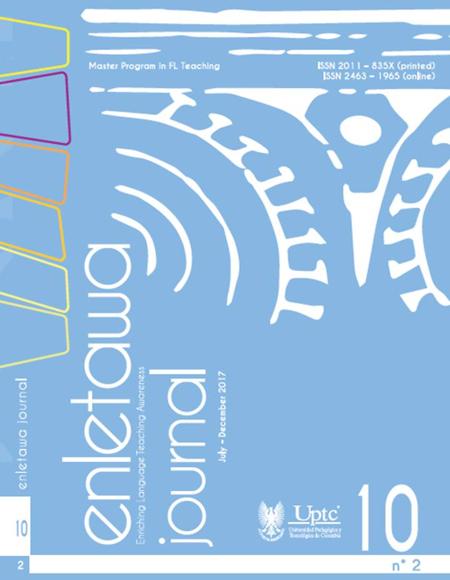What Happens in the Language Classroom in regards to Communication? An analysis of the Cooperative Principle

Abstract
The concept of communication in the field of education has been discussed by language teachers, scholars, and researchers among others. This article analyzes and reflects on the way in which language teachers and students communicate in the language classroom. This analysis was done based on the rules of the Cooperative Principle, proposed by Paul Grice in 1975. The inquiry consisted on studying how the teacher and students flout the maxims of communication proposed by the principle (quality, quantity, relation and manner). For the analysis, an eighth grade English class at a private school was recorded, and parts of the video were extracted. This analysis is not focused on studying how teachers and students make mistakes, but rather how communication is carried out in the language classroom.
Keywords
Communication, language classroom, Grice’s cooperative principle, maxims of communication, flout of maxims
References
Communication [Def. 5]. (n.d.). In Merriam Webster Online, Retrieved February 18, 2017, from https://www. merriam-webster.com/dictionary/ communication
Communication [Def. 1]. (n.d.). In Cambridge Online Dictionary, Retrieved February 18, 2017, https://dictionary. cambridge.org/es/diccionario/ ingles/communication
Davies, B. (1997). An empirical exami-nation of cooperation, effort and risk in task- oriented dialogues. Unpublished PhD thesis. University of Edinburgh.
Davies, B. (2000). Grice’s Cooperative Principle: Getting the meaning across. Retrieved from https://es.scribd. com/document/338217455/Daviesabout-Grice-s-cooperative-principle-pdf
Du, Y. (2016). The Use of First and Second Language in Chinese University EFL Classrooms. Doi: 10.1007/978-981-101911-1
Escavy, R. (1998). El principio de cooperación y las violaciones antagónicas. Universidad de Murcia. (pp. 31-40). Retrieved from https://www.uv.es/ perla/3[03].Escavy.pdf
Fajardo, J. (2013). “What makes a teacher”: Identity and classroom talk. Cuadernos de lingüística hispánica, 22, 127-146.
Grice, H. (1975). Logic and conversation. Harvard University: Harvard University Press.
Grice, H. P. (1975). Logic and Conversation. In P. Cole, & J. L. Morgan. (Eds.), Syntax and Semantics, Vol. 3, Speech Acts (pp. 41-58). New York: Academic Press.
Kocaman, O. (2016). Communication barriers that junior and senior ELT students experience in the process of learning a foreign language. Abant İzzet Baysal Üniversitesi Eğitim Fakültesi Dergisi, 16 (4), 1779-1794.
Nouar. Y, (n.d.). Linguistic competence, communicative competence, pragmatic competence and their implications for foreign language teaching and testing. Retrieved from http://fac. umc.edu.dz/fll/images/expressions/ Yasmina-NOUAR.pdf
Pakbaz, M., Bigdeli,H., Moolaey, F. and Ghaffari, A. (2014). Organizational communication and barriers to effective communication in organizations. International Journal of Management and Humanity Sciences, 3(10), 3174- 3180.
Pan, Yi-chun., and Pan, Yi-ching. (2010). The use of L1 in the foreign language classroom
Paultston, C. (1974). Linguistic and communicative competence. TESOL QUARTERLY, 8, 347-362.
Shardimgaliev, M. (2016). Grice’s theory of communication and interpretation of law. Retrieved from http://punzel. org/Book2016/Shardimagliev-Final. pdf
Wharton, T. (2003a). Interjections, language and the ‘showing’/‘saying’ continuum. Retrieved from http://www. phon.ucl.ac.uk/publications/WPL/ 00papers/wharton.pdf
Wharton, T. (2003b). Paul Grice, saying and meaning. Retrieved from http:// ftp.phon.ucl.ac.uk/home/PUB/ WPL/02pa pers/wharton.pdf